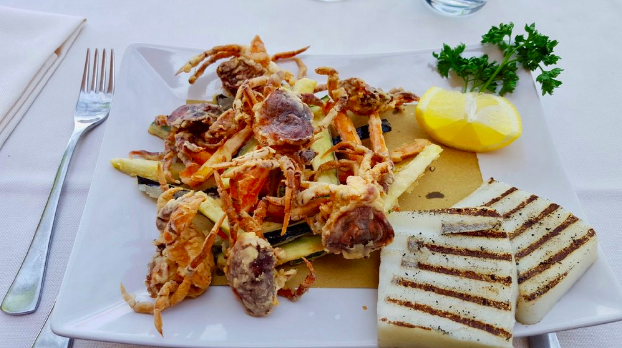ORI tabling at Medford MA Farmer's Market June 20, 2019
Extreme Weather Turkey-baster Downpour Takes Out Lego House Lacking Lawn in Medford
Lawns that don't pollute and are healthy, as played by green sponges, absorb more storm water to protect homes, as played by Lego blocks. Homes that have replaced lawns with hard surface suffer more water damage. This was the findings by children, and a few adults, stopping by ORI's table in Arlington and Medford.
To clean up local waterways in Eastern MA, ORI has taken to the streets and river with our Let Lawns Fight Climate Change Campaign. We are spreading our message and raising community awareness. Arlington Conservation Commission responded to our meeting with them by modifying their wetland order and conditions to ban spreading fertilizer on established lawns. We are working with other towns to follow their lead.
People don't read regs, so we have taken to farmer's markets in Arlington and Medford with a hands-on demonstration on how lawns protect homes from the extreme weather events wrought by climate change. With children engaged (check out the video), adults spend time learning about the difference between fast-release (bad) and slow-release (good in modest amounts).
We found that Farmer's Markets are the best place to talk with people about shrinking their carbon footprints and increasing carbon capture (especially with healthy grass). Many signed up for eAlerts, pledged to fight climate change and you may join us in fighting climate change.
Next, once your lawn is healthy and not polluting, consider replacing that hard-surface patio with a lawn. Your bare feet will appreciate it and you'll be protecting your home with more spongy grass. Watch out for turkey-baster weather events dumping more water on hard surfaces near you.
|
|
Loopholes. No-vote amendments. Rushed votes. Dishonest debate. One of the most dangerous tricks is also one of the most carefully-hidden: tax breaks for Big Oil.
Right now, the federal tax code has over 40 tax breaks to encourage energy companies to drill, mine, and frack their way around the country.
In Congress, the Clean Energy for America Act would consolidate the current 44 energy incentives into just three - all of them to speed development of clean electricity, clean transportation, and energy efficiency. No surprise here: Mitch McConnell is determined to make sure the bill never sees the light of day.
We're fighting to get the bill a fair hearing in the Senate, and that means making sure people know about it. Help us spread the word by joining Global Warming Problem Solvers, stand out in a crowd, and share this post.
|

Eat Invasive Green Crabs & Make Way for Rock Crabs
Mary Park, Executive Director of GreenCrab.org, talks with Rob about how to combat an invasive species, the green crab, by eating like a Venetian. Over the decades, the invasive green crab populations have exploded. Green Crabs not only are pushing out local blue and rock crabs, but also lobsters over food and territory - even eating lobster spawn. With an ability for one crab to lay over 185,000 eggs per year, green crabs are an issue that won't be going away anytime soon.
Tune in to Moir's Environmental Dialogues.
GreenCrab.org
is taking this green crab issue head-on and serving up delicious solutions. To find out how to prepare these crustaceans, they traveled to Venice, Italy, where green crabs have been a delicacy for generations. Crabs are examined held up to a light and then separated into individual containers where they molt in solitary confinement. These are the soft-shell crabs, green crabs, that draw people from all over the world to Venice (move over Baltimore).
One of GreenCrab.org's goals is to bring this culinary industry home and increase the demand for green crabs in the US. With green crabs bursting out of tidepools and subtidal areas, it is easy to put green crabs (dinner!) in a pail. To save the ocean from this invasive species, Mary says "if you can't beat em, eat em."
|
Slow-release fertilizer, in modest amounts spring or fall, feeds grass over time while roots go deep.
Slow-release fertilizer consists of bits of nitrogen surrounded by a smooth polymer that dissolves slowly over time when there is moisture. During dry spells or winter when the grass is dormant the nitrogen remains bound up. When moisture returns, it is there when the grass needs it.
Conventional fertilizers for lawns are much like feeding children a high sugar breakfast, they'll consume it quickly and be hungry before lunch. Slow-release fertilizer is like a high protein breakfast that will last for much longer. For grass in New England it could be months, unless it's a wet summer. Then the grass may grow more and capture more carbon.
Use only 100% slow-release fertilizer such as the one pictured above because all of it will benefit the grass over time and zero percent can wash away from the grass. The polymer that is encasing the nitrogen bits is fortified with eleven essential nutrients primarily for soil microbes.
For healthier soils, especially for lawns once inundated by quick-release fertilizer, consider applying a half pound per thousand square feet of lawn of slow-release fertilizer in the spring or fall.
|
 |
|
"This house has more spongy grass protecting it from extreme weather events."
Choose from more than 100 radio broadcast episodes, also free on iTunes
Join ORI's Fan page on Facebook.
We've surpassed 6,000 likes. When you and friends like us, it helps us get the word out and makes it easier for others to donate.
Wear with pride ORI logo items.
|
|
|
|
|